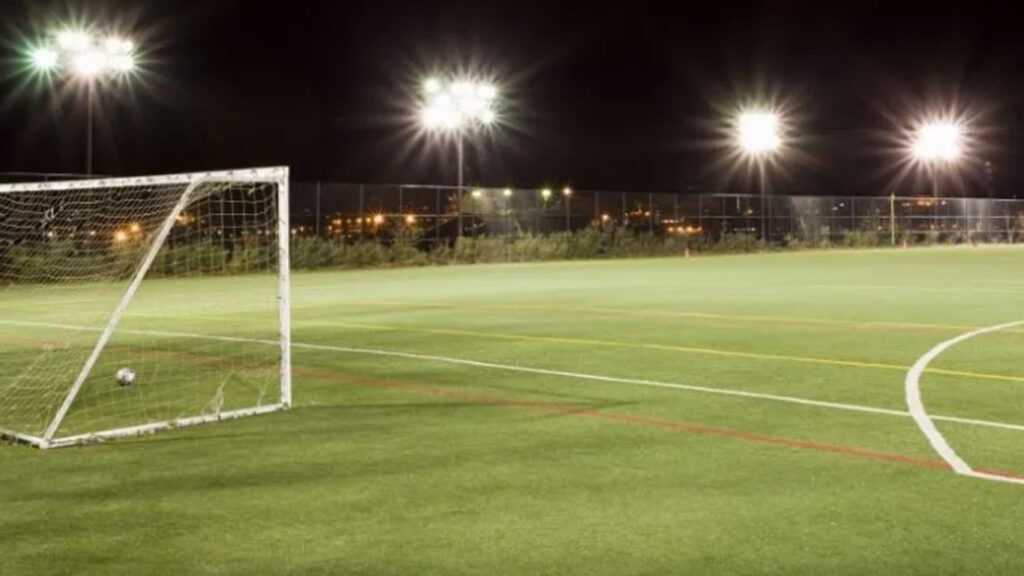Glare is a critical factor to consider when designing lighting systems for sports facilities. In this guide, we will explore the significance of Unified Glare Rating (UGR) and Glare Rating (GR) in assessing and managing glare in sport lighting. We will also delve into the role of photometric plans in evaluating lighting designs. Understanding these concepts will help create optimal lighting conditions that enhance athletes’ performance and ensure their safety.

What is Glare?
Glare refers to the discomfort or impairment caused by excessive brightness or contrast in the visual field. In sports environments, glare can negatively impact athletes’ concentration, visibility, and overall performance. It can arise from direct sources or be reflected off surfaces, affecting both players and spectators.
Introduction to UGR and GR
UGR and GR are standardized metrics used to quantify and evaluate glare in lighting systems. UGR specifically focuses on indoor lighting, while GR encompasses both indoor and outdoor environments. These metrics consider various factors such as luminaire characteristics, observer position, and surrounding conditions to determine the level of glare experienced.
The Significance of Photometric Plans
Photometric plans play a vital role in sport lighting design and assessment. These plans provide detailed information about light distribution, illuminance levels, and glare analysis. By utilizing photometric data, designers can identify areas of potential glare and optimize lighting setups to minimize its effects.
Evaluating UGR and GR in Sport Lighting
The evaluation of UGR and GR involves a comprehensive analysis of various parameters. Observer position, viewing angles, luminaire data, and recommended threshold values are considered during the assessment. Different sports activities and spaces may have specific UGR and GR requirements, which need to be met to ensure optimal lighting conditions.
The image below displays glare calculations for a 100 x 64m football field. The maximum glare for competition fields should be 50, while for training purposes it should be 55, both measured at a height of 1.5m from the floor. In this specific example, all glare points are below 50.

Strategies for Glare Reduction
To minimize glare in sport lighting, several strategies can be employed. Proper luminaire selection, effective shielding, and beam control play significant roles. Additionally, the implementation of glare control devices and the use of lighting controls, such as dimming and zoning, contribute to glare reduction and flexibility in adjusting lighting levels.
Optimizing Sport Lighting for UGR and GR
Achieving optimal UGR and GR levels in sport lighting requires collaboration among lighting designers, architects, and engineers. Ongoing maintenance and monitoring are crucial to sustaining optimal lighting conditions and minimizing glare over time. Regular assessments and adjustments ensure that lighting systems continue to meet recommended standards.
Understanding UGR and GR is essential for creating glare-free sport lighting environments. By considering these metrics and utilizing photometric plans, designers can optimize lighting designs to enhance athletes’ performance, safety, and overall experience. Prioritizing glare reduction in sport lighting ensures visual comfort, improves visibility, and contributes to the success of sporting events. By following best practices and staying up-to-date with industry standards, we can create sports facilities that provide outstanding lighting conditions for athletes and spectators alike.
